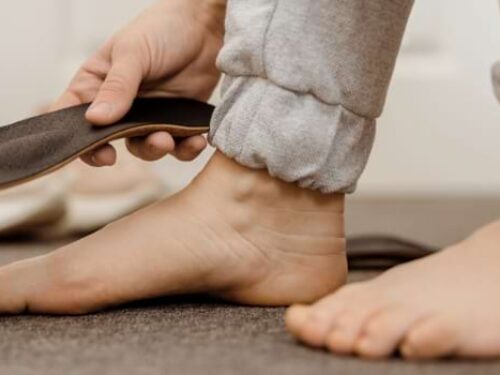
Melanoma
When members of the New York State Podiatric Medical Association (NYSPMA) were surveyed on whether they had ever discovered melanoma or skin cancer during a routine foot examination, 75% of the foot specialist respondents answered positively.
Survival rates are dramatically lower when melanoma is found on the foot since it often goes unnoticed until the patient is having a serious problem. If the melanoma is not caught in the early stages, the fatality rate is about 50% within five years of diagnosis. All the more reason for checking your feet on a regular basis, say doctors of podiatric medicine.
“I’ve diagnosed melanoma through routine foot exams, said Dr. Robert A. Russo, President of the New York State Podiatric Medical Association and a practicing podiatrist. “One example is a patient who came in thinking they had a plantar wart, but the biopsy I ordered proved it to be melanoma,” he added.
Feet that are not regularly exposed to the sun during the year are very sensitive. Skin cancer can occur on the soles of the feet, as well as on the tops, between the toes and under the nails. Podiatrists say that it is important to have routine foot checks to diagnose any abnormalities that could be symptoms of the disease.
The majority of Americans have been conditioned to protect themselves by staying out of the sun or using a broad-spectrum sunscreen that blocks both UVA and UVB rays. But many times feet, especially toes, are not given proper sunscreen protection. Additionally, sunscreen must be reapplied regularly, especially after going in the water.
Signs of malignant melanoma – one of the most deadly forms of skin cancer – include changes to moles such as itchiness and bleeding. Also, normal lesions are generally one color, with a distinct border, and about the size of a pea or smaller and do not dramatically grow in size. The A,B,Cs of possible melanoma lesions are:
A-Asymmetrical shape.
B-Bleeding or oozing.
C-Change in color.
D-Diameter of the lesion. If it is large or getting larger.
E-Evolving. Changing in size, shape, border, color, itching.
F-Fingernail or toenail bruise that does not grow out with the nail.
Contact our offices to setup your routine appointment. [button color=blue size=small link=/request-appointment]Request An Appointment[/button]
###
The information included in this article is for educational purposes only. It is neither professional medical advice nor is it intended or implied to be a substitute for professional medical advice. Without exception, the reader should always consult his or her healthcare provider to determine the appropriateness of the information for their own situation, or if they have any questions regarding a medical condition or treatment plan. Reading the information in this article does not create a physician-patient relationship.


